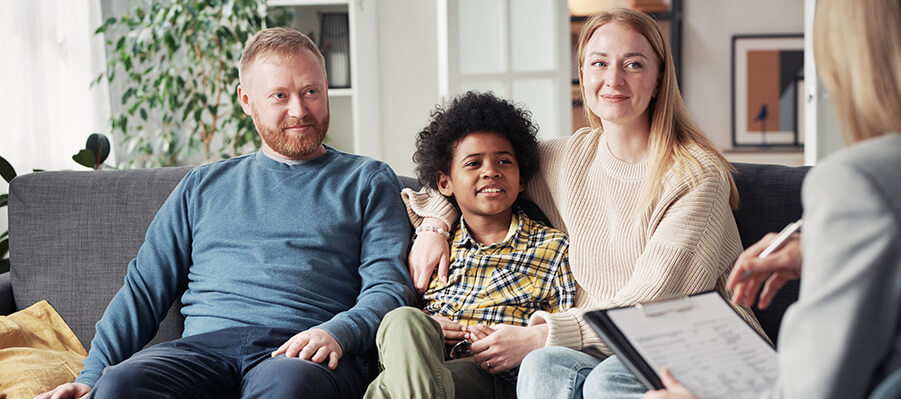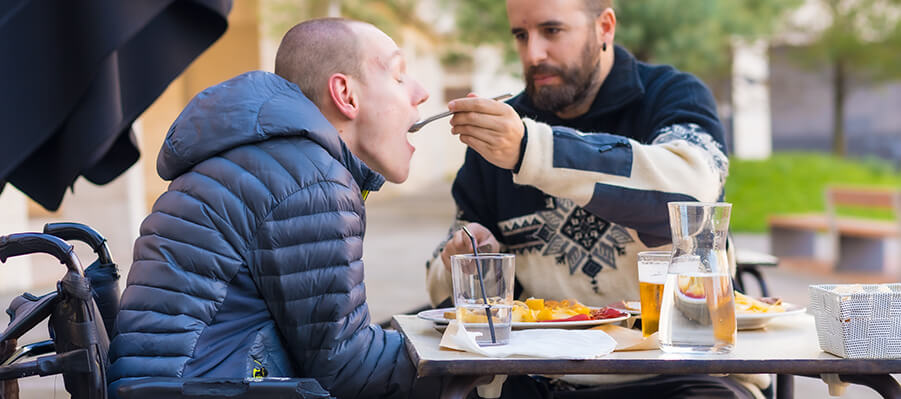Alternatives to opioids, continued: The Community Integration Pain Rehabilitation model
Using options like acupuncture, physical fitness, pottery, and more within an organized community-based program can help people reduce reliance on opioids.
In the April issue of this series, CARF covered the nature of pain, which tells us that chronic pain is best managed not by opioid pain medication, but by a biopsychosocial approach that addresses the physical, psychological, and social needs of each individual. This holistic approach is supported by CARF standards for Interdisciplinary Pain Rehabilitation (IPR) programs. CARF spoke with Greg Smith, a CARF surveyor and the director of Progressive Rehabilitation Associates (PRA). PRA runs IPR, specialty brain injury, and occupational programs in Portland, Oregon, and a Community Integration Pain Rehabilitation Program in Vancouver, Washington, all accredited by CARF. What makes the Vancouver program unique is that it is the first IPR program to be accredited under CARF’s Behavioral Health Community Integration standards—with a Psychosocial Rehabilitation Specialty. (Pain programs typically seek accreditation through CARF’s Medical Rehabilitation Standards Manual.)
In 2015, the medical director for an insurance company approached Greg and asked him to design a program for insured individuals with a long history of treating pain with opioids via emergency rooms and urgent care facilities. Together with his staff, Greg researched and developed what is now PRA’s Community Integration Pain Rehabilitation Program. The keys to success of the program were to establish working relationships with primary care physicians, expand services offered by creating linkages to the community, and offer a safe space where people can learn at their own pace.
This IPR program is a hybrid of psychosocial rehabilitation and a clubhouse model that includes structured activities under one roof and linkages to primary care, substance abuse treatment, therapy pools, community mental health services, massage and movement specialists, and others providing low-cost or sliding-scale services. Expressive arts, including pottery and painting, support themes like “You are not your pain.” Persons served can participate in weekly nutritionist-guided cooking classes to prepare non-inflammatory meals and leave with the recipe. Translating skills learned to the home and community is emphasized along with use of the community services available.
A program is designed for each individual in cooperation with the primary care physician and based on that person’s needs. Each person served has a case manager who assists with goal setting and skills development. PRA can recommend treatment, monitor the patient’s physician schedule, and call the insurer to assign a caregiver, but only if necessary. The clubhouse activities are paired with cognitive behavioral therapy (CBT) and acceptance and commitment therapy (ACT) techniques, combined with traditional behavioral approaches, as well as complementary health approaches such as acupuncture and hypnosis. Activity coaching and occupational therapy round out the physical components to improve function.
The program is offered five days per week, and persons served are encouraged to attend any and all sessions and can stay until the facility closes. Content is reinforced to keep those with sporadic attendance engaged. A therapist is always present on site, but the goal is for persons served to self-manage their care. Group therapy sessions help individuals work on issues among themselves. Individuals are in control of their treatment plan. Greg says the program is working because persons served are engaged in their own treatment, but more so because “people have fun there.”
This “fun” program isn’t reducing persistent pain simply by distraction. Organized activities and therapies promote neuroplasticity in a patient, which allows the brain to compensate for injury or trauma by forming new neural connections. To reconnect injured or severed neural pathways, neurons must be stimulated by activity. The new neural pathways help to restore or improve a patient’s function, precisely the goal of IPR.
Greg’s hope is wide proliferation of this model. When asked what advice he’d give to an organization looking to adopt IPR, he says emphatically “Do it!” Greg recommends that a program look into its own community and use the resources available. PRA added acupuncture to its programming by linking to local providers of the service, and establishing a relationship with the community swimming pool enabled further recreation opportunities.
PRA’s community pain rehabilitation program has garnered the attention of other large insurance companies as well. In April, Greg presented this rehabilitation model for persistent pain to United Health Group, which is interested in migrating its current pain treatment protocols to the community-based IPR model.



